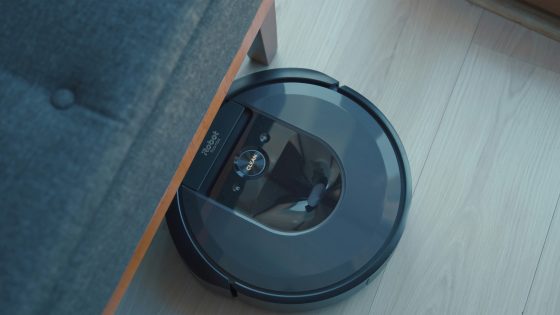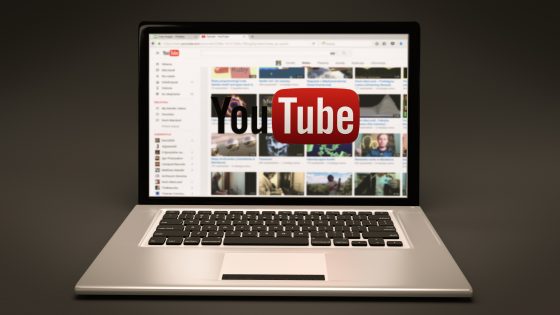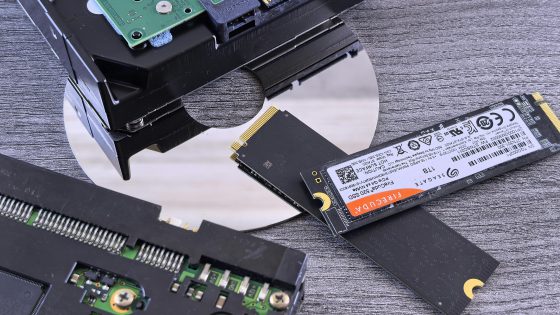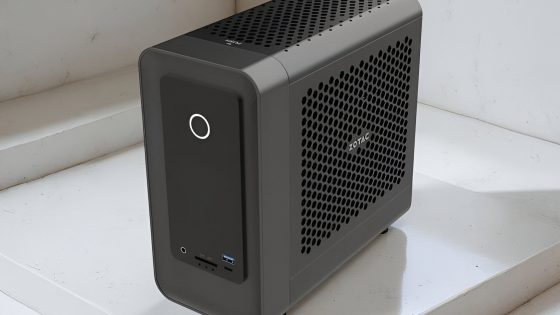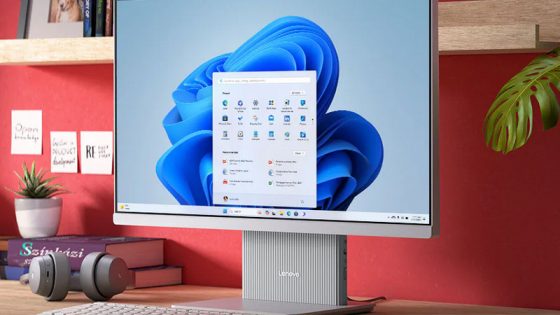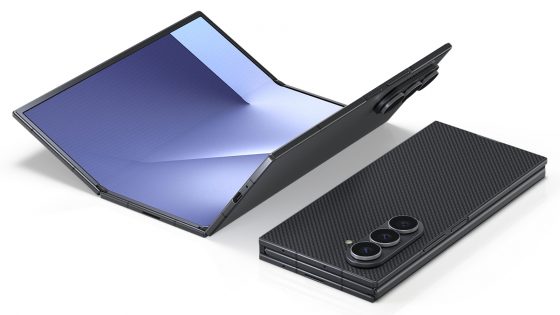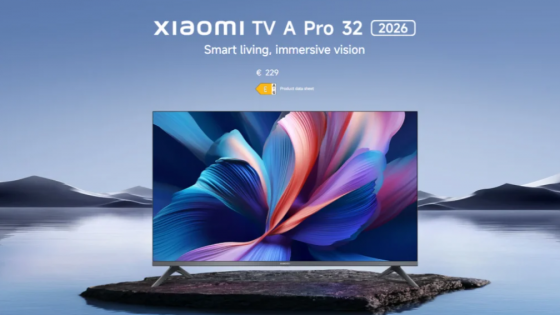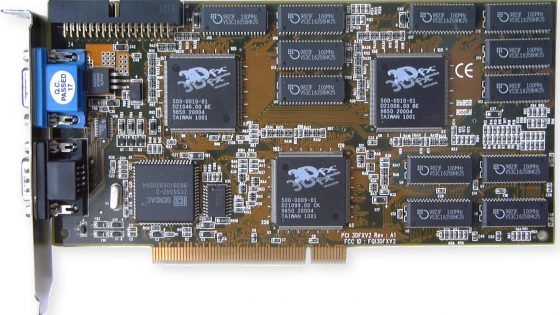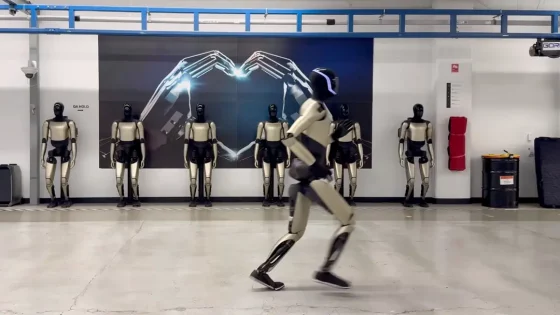Tuxedo Atlas XL test – what's the point of Windows when you can have a Linux computer

I usually build my own computer, but this time I left the job to others, more specifically to the German company Tuxedo.
This isn't going to be a typical test. I didn't just test how they put the computer together, the individual components, and their performance, but I also took a look at their operating system. Tuxedo ships its computers with its own operating system, or Linux distribution (“distro”), Tuxedo OS. While I could have chosen Windows, I wanted to get a genuine experience, which includes their system. And I can still dual-boot whenever I need Windows.
You can build practically any computer you want
The fun started with their configurator, where I basically had free rein to choose what I wanted. Of course, I made sure that the components matched, although their system already warns you about this. You can choose from practically all components on the market. You can choose AMD or Intel architecture as a base.
What did I get or choose?
| Housing | Fractal North XL |
| Base plate | MSI Pro Z790-A MAX WiFI |
| GPU | Nvidia RTX 5070 Ti |
| CPU | Intel i5-14600K |
| AIO | Xilence 240 mm |
| PSU | Xilence 1050 W (modular, ATX 3.0, PCIe 5.0) |
| RAM | Corsair Vengeance 32 GB (2x 16 GB) DDR5 (5600 MT/s) |
| SSD | Samsung 990 EVO Plus 2TB |
| The rest | Wi-Fi 7, Bluetooth 5.4 |
After their internal inspection, I received the computer after a few days, the whole thing took about two weeks. The computer was delivered in two boxes, wrapped in protective foam, the latter was also used inside the computer, which ensured that the components and cables did not move during transport. However, there was a minor incident. The pin where the graphics card is stuck partially cracked during transport (despite the expandable foam). It still holds the PCIe connector, but it will fall out at any moment. I can't really blame Tuxedo much here, because they followed the same transport protocols as the others, unfortunately this particular computer was unlucky. Is there something wrong if this pin is missing? Not at all, some motherboards don't even have it, but I would still recommend that if this ever happens to you, you add some support under the graphics card to relieve the load on the PCIe. Or better yet, contact the manufacturer.
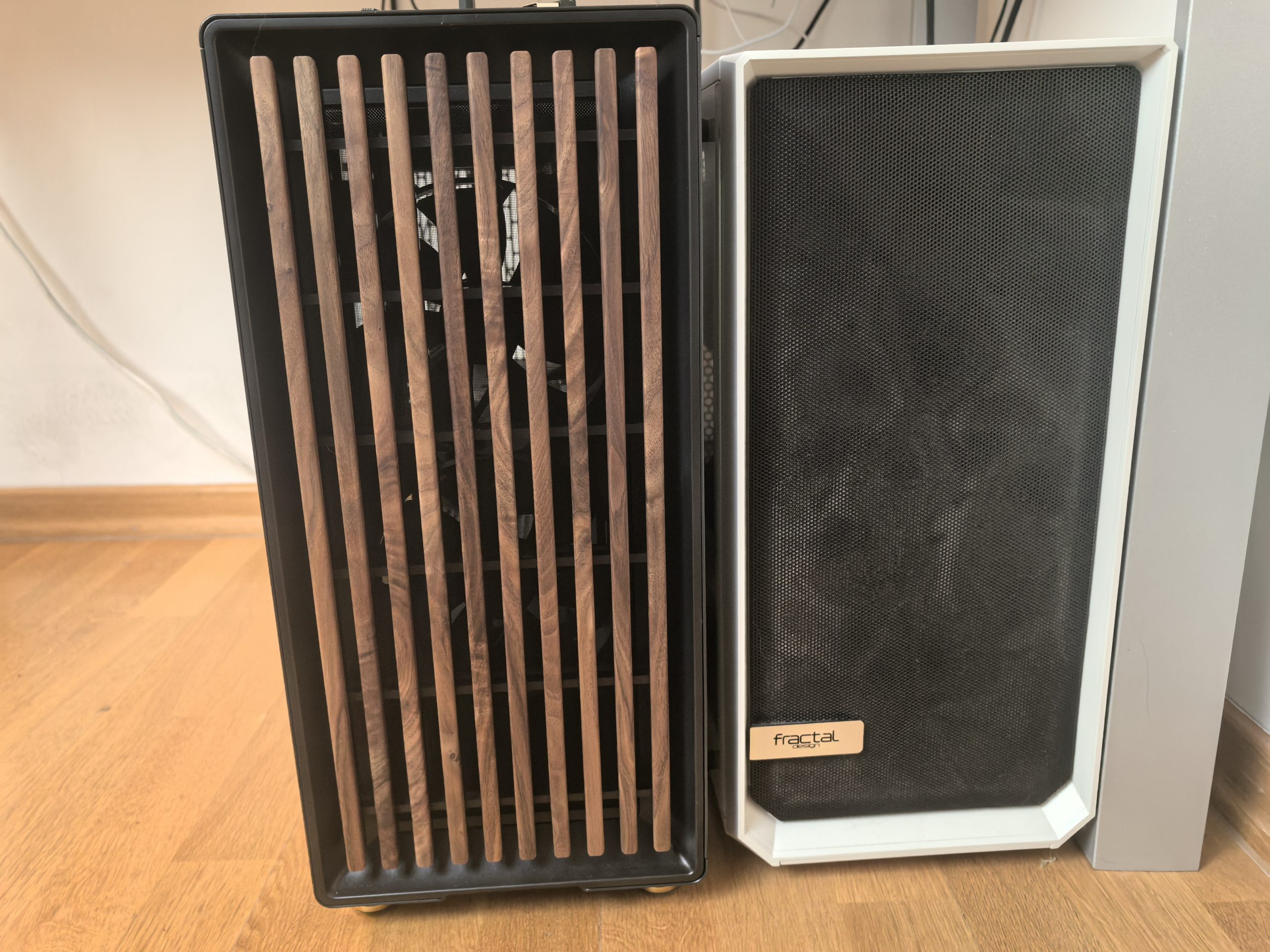
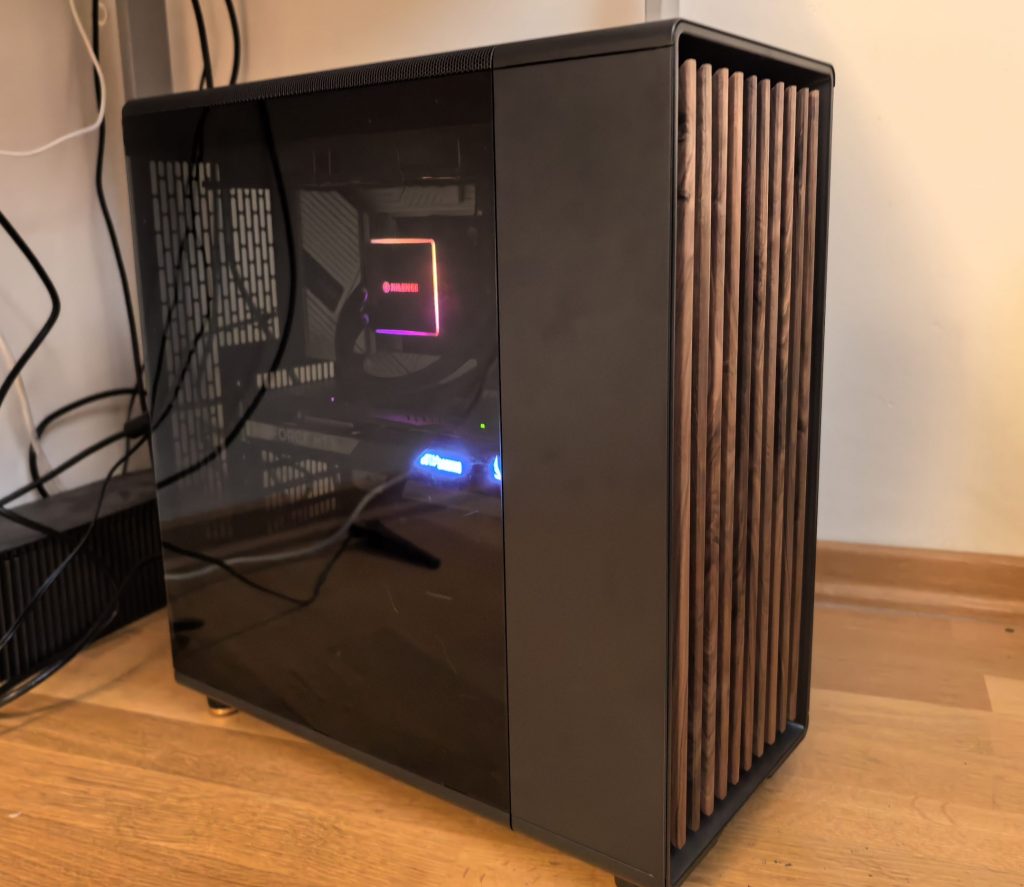
Fractal has quite a few great cases. I've built in them before and I still have their classic Meshify-C at home. The Fractal North XL, which Tuxedo uses for its largest "tower" computers, has one interesting feature - a wooden front panel (oak or walnut). It nicely adds to the otherwise classic look, and what I also like about it is that the wood will look slightly different on each user.
The side panel is glass so you can admire what you bought, the back panel is perforated (with holes) for better airflow, as is the top cover, which is held in place by a magnet, which is a bit weak. When you move the computer, you can easily remove the cover by hand. There is a leather handle on the back to remove the cover. You can remove the sides by unscrewing the screws, a classic, if not the most elegant solution.
It's a shame they don't offer the Fractal North XL with a mesh side, which at least looks unique in the picture.
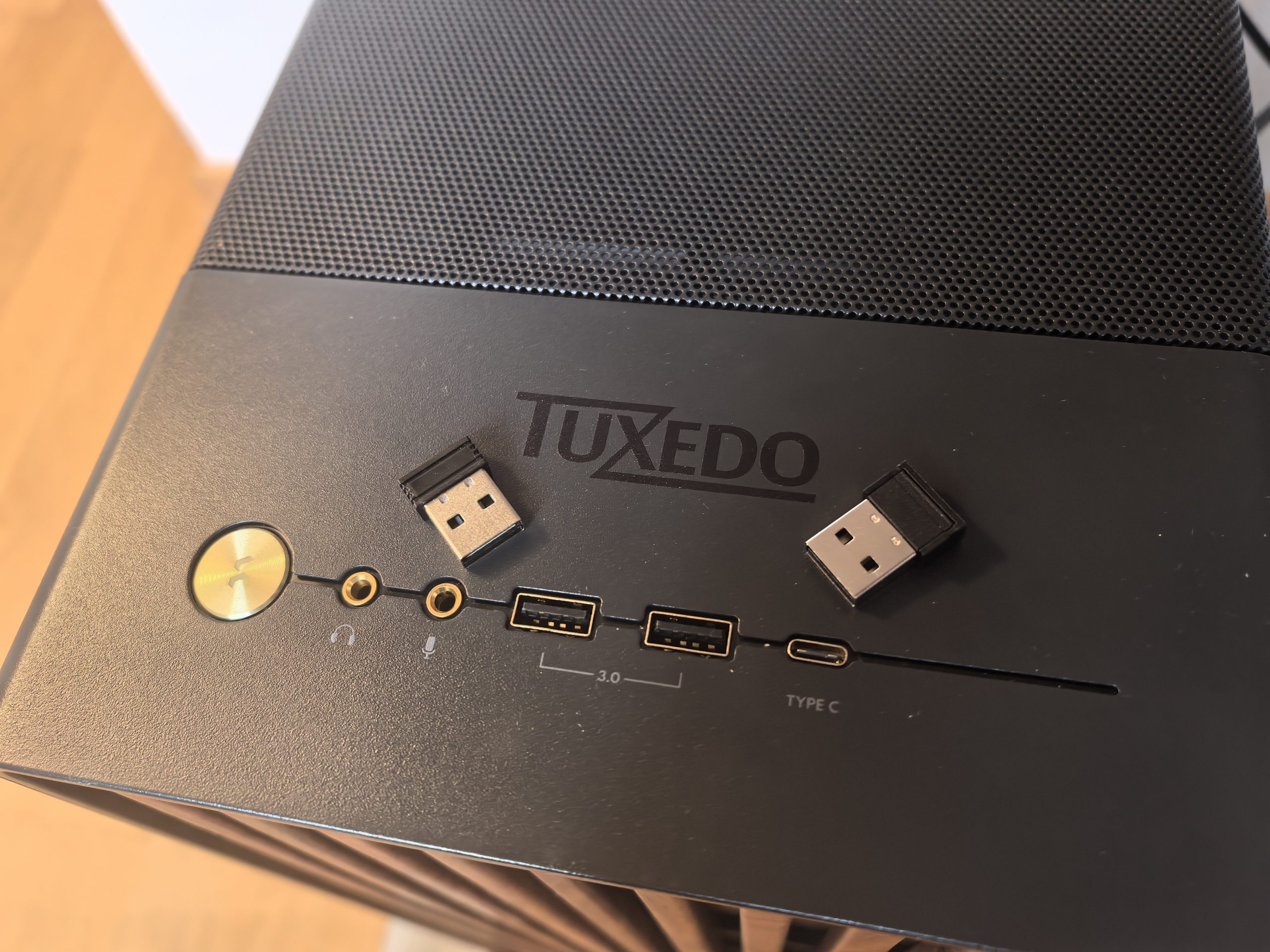

There's a lot of space. The fact that you can install a 420mm AIO in the front says it all. If that's not enough, you can add up to a 360mm AIO on top, and a 120/140/80mm fan in the rear. It supports graphics cards up to 413mm long, or 380mm if you're thinking of adding an AIO in the front. Given all this, it's also clear to you that you can install basically any motherboard, even E-ATX format. Tuxedo decided to install two 140mm PWM fans (in the front) by default, and the processor is cooled by a 240mm AIO. If you wanted to change to an air cooler, you should consider that there is 185mm of space in the height, which is enough space for most air coolers with two towers.
The front connectors (2x USB-A 3.0 Gen 2, 1x USB-C 3.1 Gen 2, audio, microphone) and the feet have golden brass accessories that nicely enhance the appearance of the computer.
A lot of effort has been put into the assembly of the computer. The cables are hidden, routed through the most optimal openings, neatly arranged and tied at the back for easy viewing. Fortunately, there is no exaggeration with the lighting, so the look is very "clean" and minimalist, the black and brown complement each other nicely.
More about airflow and temperatures a little later. It was time for the first boot and familiarization with Linux.
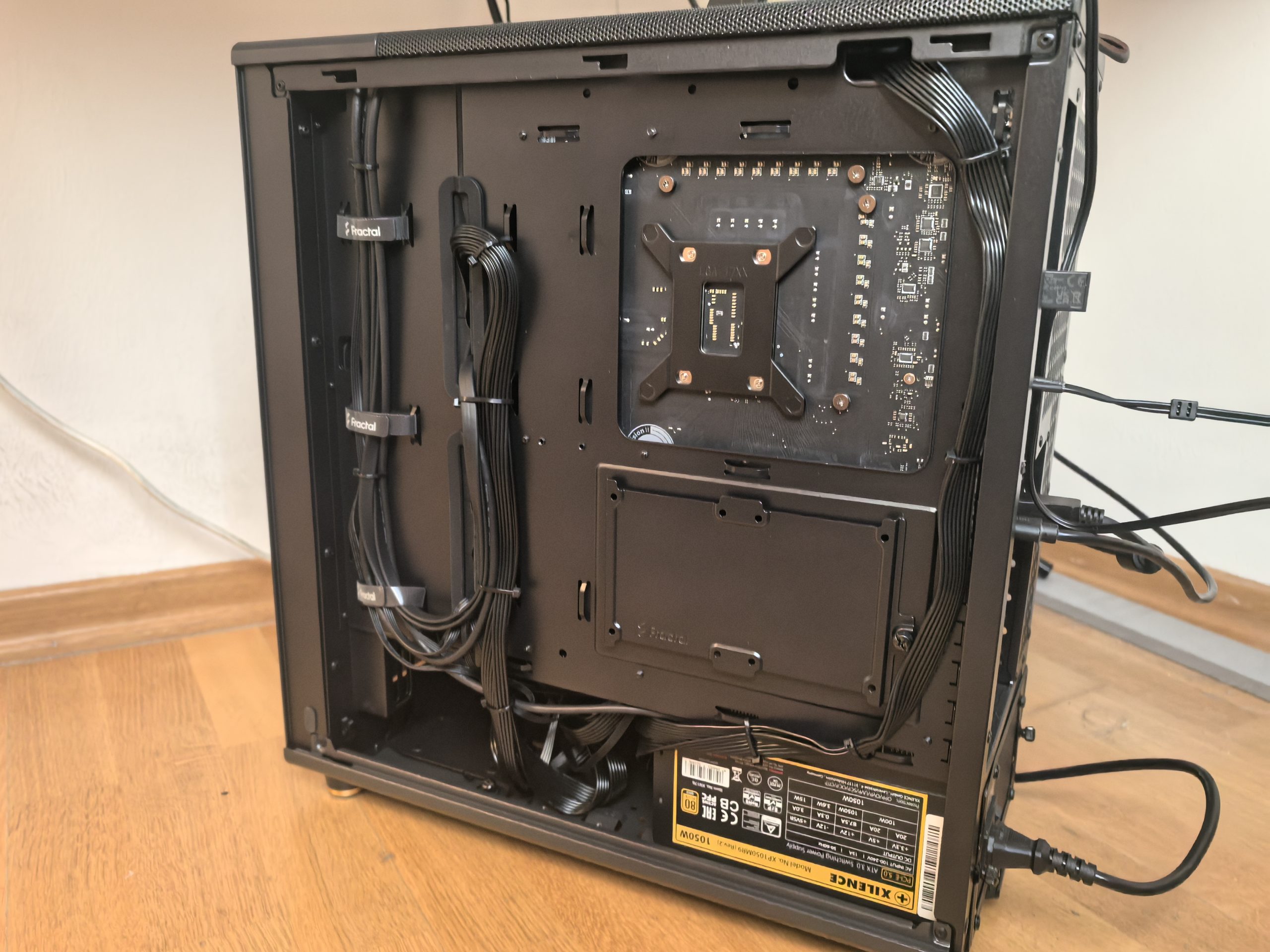
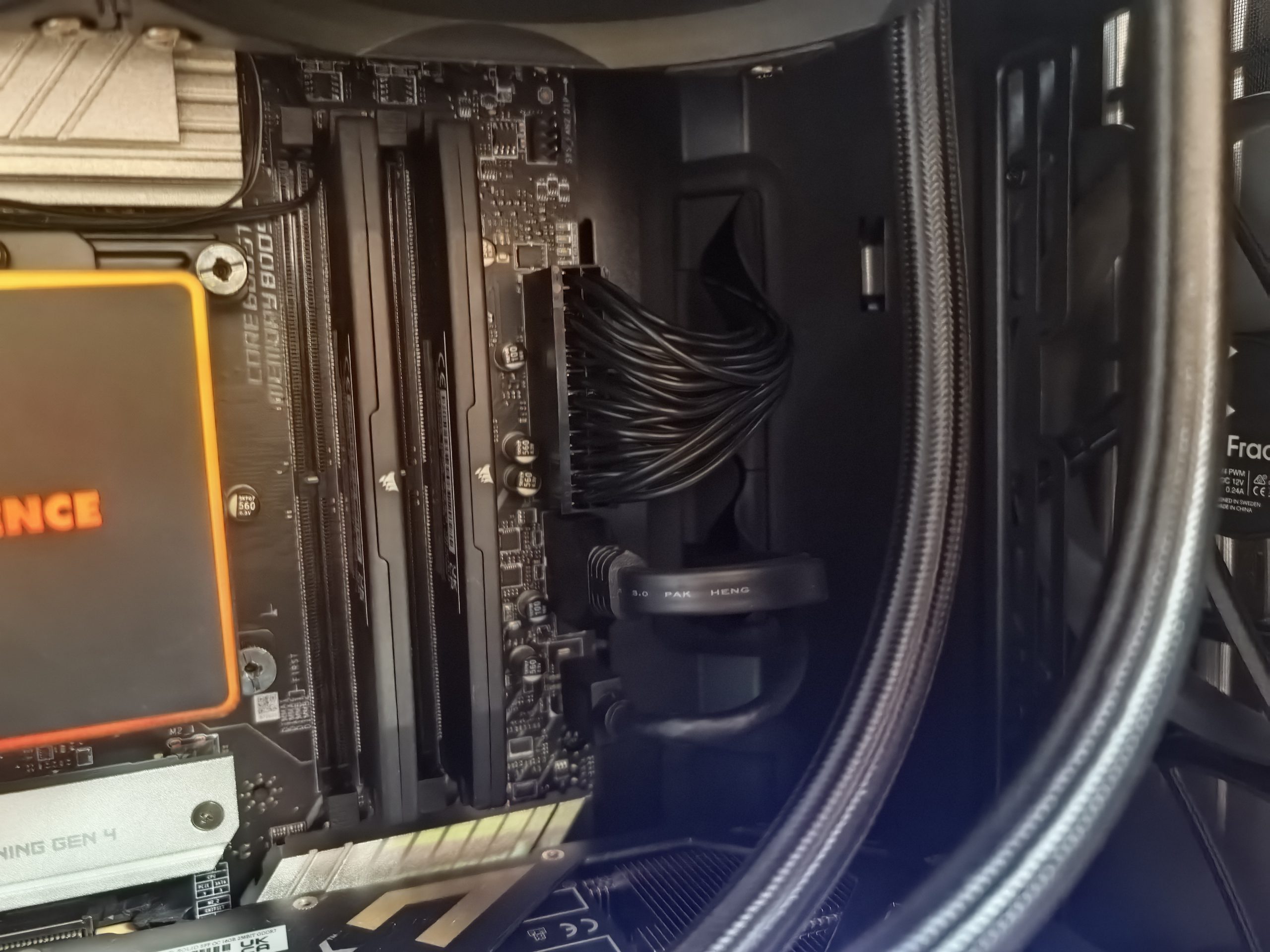
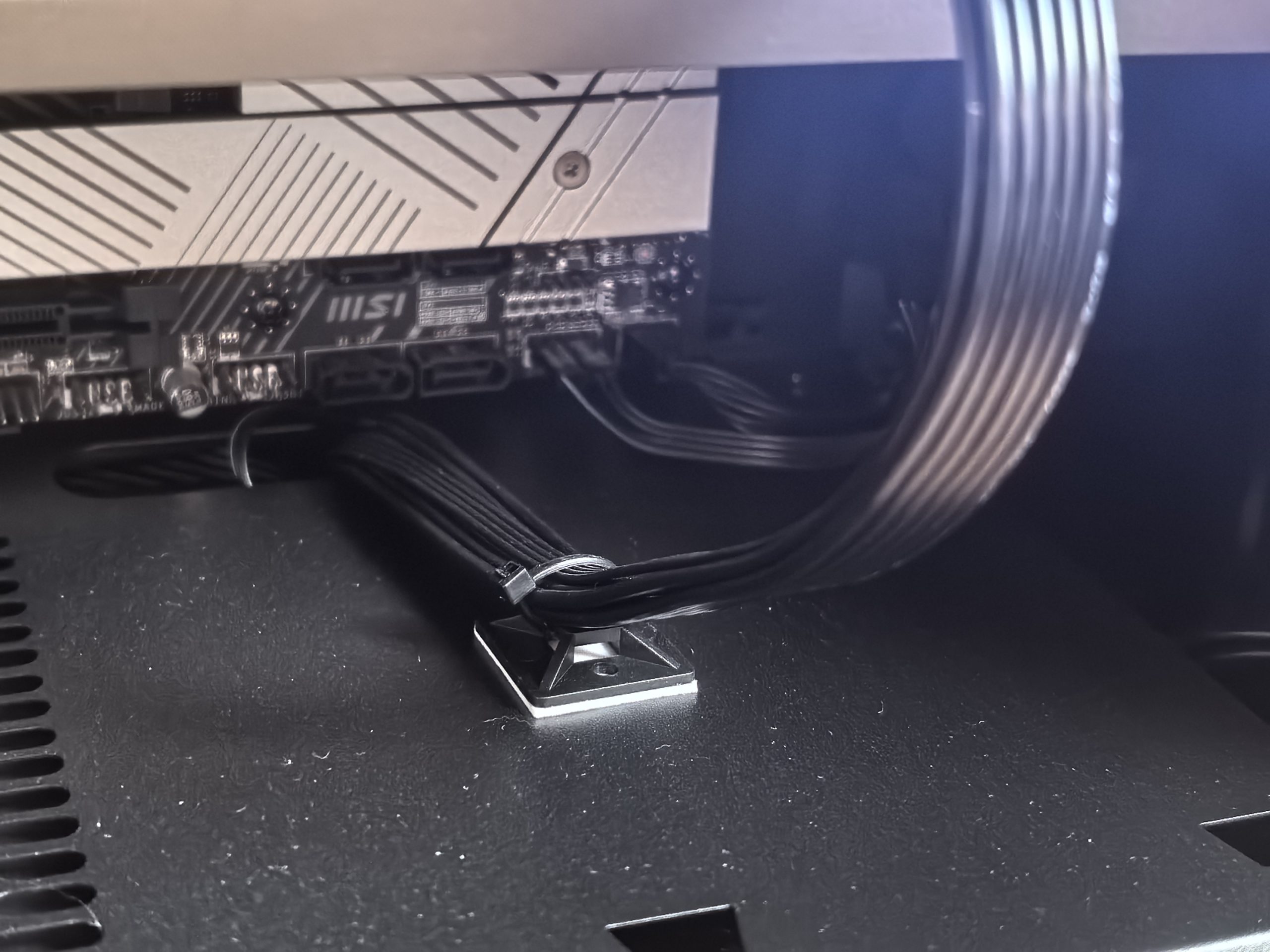
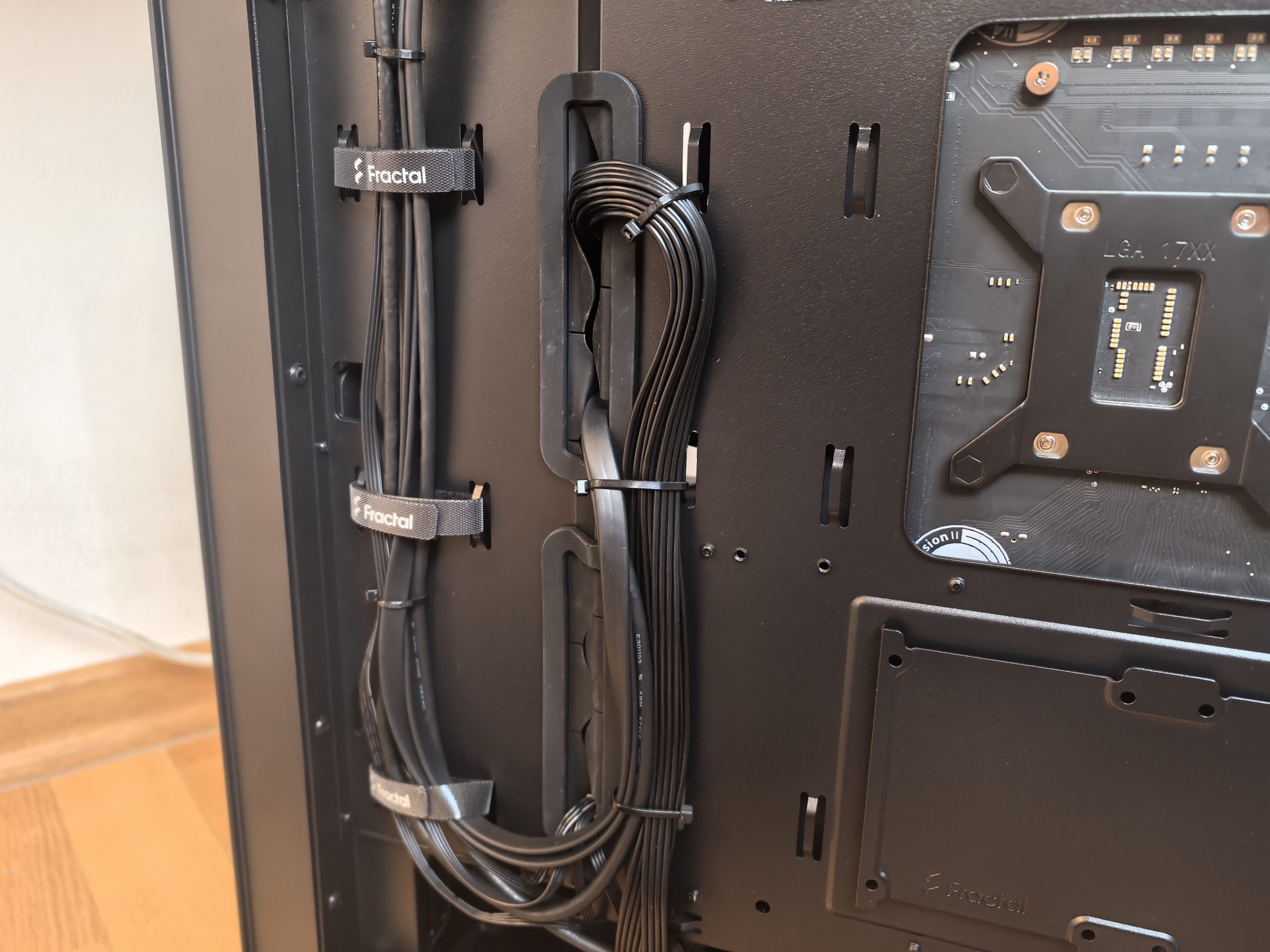
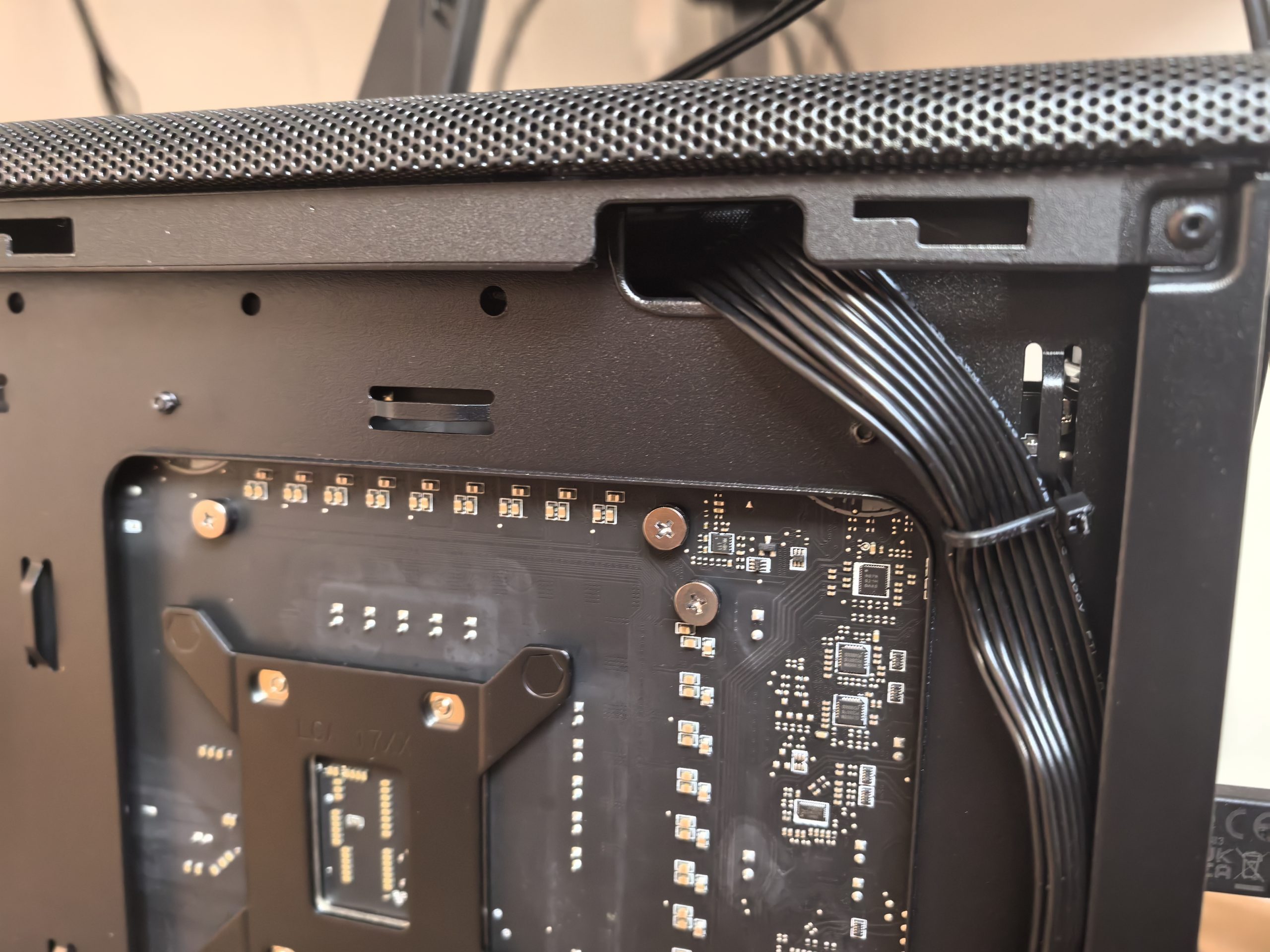
TUXEDO OS – based on Ubuntu LTS, which will be familiar to many
Am I a Linux expert? Not even close. I have Bazzite installed on my computer for gaming, or more often than not, to compare how it performs compared to Windows. I use Ubuntu for work projects, but not as a standalone system, I use it as a VM. So I know the basics, but I'm not a Linux expert, which is great in this case because I can introduce TUXEDO OS to a regular reader and maybe dispel the fear that many people feel when they hear Linux.


TUXEDO OS is based on the Ubuntu LTS (Long-Term Support) distribution with the KDE Plasma desktop environment as the default interface. If you buy their computer, the system is loaded by default, but you can also install it on other computers. ISO file can be found on their website. If you install their distribution on your computer, you will be guided through the process by the Calamares framework, which is also used by many other distributions. You can also choose between Wayland and X11, which (at least in my experience) is not always available.
What are Wayland and X11? Simply put, they are graphical interface display technologies. That is, how windows, programs, graphics, and other elements are displayed. X11 is an older protocol, but well-established. Wayland is newer and aims to replace X11. Since TUXEDO OS uses Plasma 6, Wayland is available, although in my case, at least, X11 is still the default choice. You can choose between them on the initial login screen, if you don't have this feature, add these packages:
sudo apt install plasma-workspace-wayland
If I'm not mistaken, years ago they used Budgie as the desktop environment, and now for quite some time they've been using Plasma, with which they themed the system according to their vision (colors, icons, menus, etc.), which you can still change in detail in the settings.
The user interface is very neat, even elegant, if that word can be used for an operating system. On the desktop you are greeted by a themed background that nicely emphasizes the message that this is their system. Below is the taskbar with a main menu button (just like in Windows), and next to it are window display widgets, a clock, various network shortcuts, sound... For now, almost everything is the same as in the Windows you are used to. Just less of everything, especially unnecessary programs and functions, let alone ads.

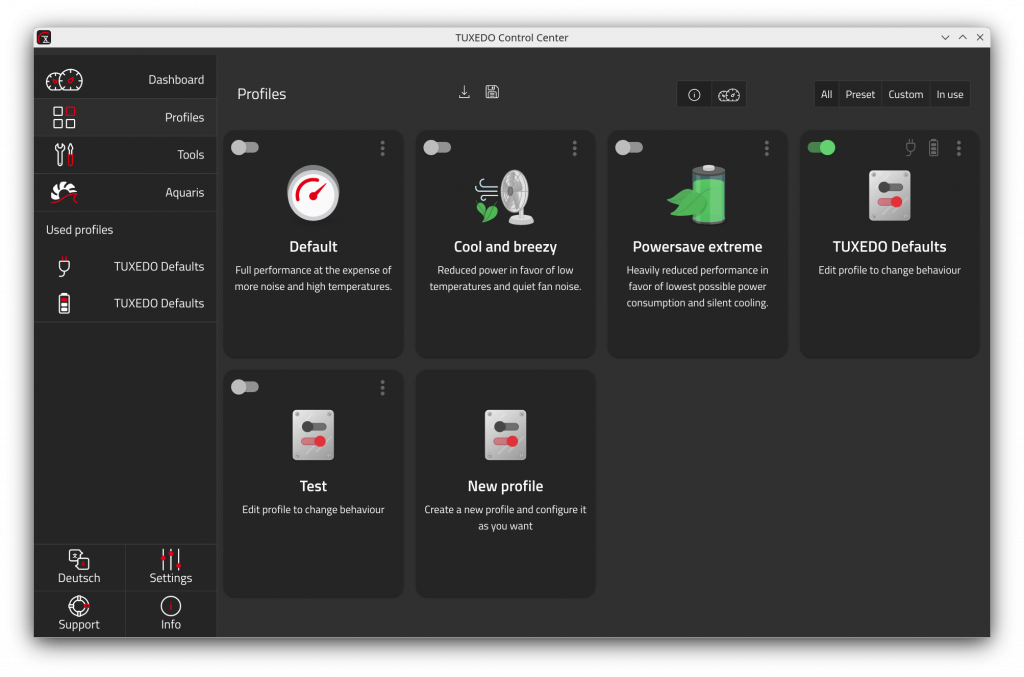
To open files, launch programs, you double-click, which has changed with Plasma 6. I like that they prioritized pragmatism over tradition. A new user coming from Windows will have one less thing to master. If you are used to single-clicking, you can still change this in the settings.
Since Plasma is highly configurable, advanced users can customize the system to their liking, from appearance to functionality. For example, I customized keyboard shortcuts and added a widget to monitor CPU and RAM usage. For the average user, however, it is important that the system works “out-of-the-box”. And this is where TUXEDO OS really shines, with all the key applications for everyday use preinstalled, such as Firefox, LibreOffice, and the like. VirtualBox (for creating virtual environments) is also installed by default, although this is not standard practice. In the repository, I immediately found Lutris and Heroic Game Launcher, which most people use to install and run games (via Steam, Epic Games, etc.), and RustDesk, which I use for remote connections.
What else is different or unique about TUXEDO OS? The TUXEDO Control Center (TCC) control panel is installed, which allows you to control the operation of the hardware. You can view the processor temperature, fan speed, resource consumption, and the like. With TCC, you can also quickly change performance profiles. In short, it provides you with certain functions that you usually find in the BIOS or other dedicated tools. And in a form that is more transparent and understandable. However, I miss being able to manually set the fan curve in TCC. The function is apparently available, but I can't turn it on. You can create new profiles, but you can only change the processor frequency (min, max), consumption at different limits (P1, P2 ...) and the TGP of the graphics card.
You can install TCC on computers from other manufacturers, but you will not have all the features available, such as settings for the processor and graphics card.
Another special feature is Tomte, which is like a kind of automatic driver installation service. It keeps the system up to date with the latest updates. If you plan to install TUXEDO OS on a computer from another manufacturer, Tomte will unfortunately not be available.
If I haven't made this clear, TUXEDO OS is as customized as possible to make the user experience as simple and autonomous as possible. The system or the Tuxedo company regularly ensures that, for example, the desktop environment (Plasma) is updated, that the Linux kernel is updated... UBUNTU LTS, on which TUXEDO OS is based, has a two-year development cycle, but you can completely ignore that, because the company will make sure that their system is always on the latest equipment.
There is another important difference compared to Ubuntu. While Ubuntu is moving to Snap packages, TUXEDO OS has decided to abandon Snap and use classic DEB and Flatpak packages. This has several consequences. Snap is a containerized package system developed by Canonical (the maintainer of Ubuntu). Flatpak is a similar technology, but more community-driven (it uses the open Flathub store). The developers at TUXEDO have disabled Snap by default for several reasons, mainly because of the speed and closed nature of this system. If you really want to, you can still manually enable Snap.
So, they use DEB and Flatpak packages. If you go to the Discover section and start searching for programs, the system will list them for you from various, official repositories and Flathub. The most important thing for the average user is that this means you have access to a wide range of programs and that they work quickly and reliably.
I initially chose Slovenian as the default language, but the translations were awkward, so I switched to English, which was not among the supported languages by default. I quickly fixed this error with a few commands:
check-language-support
sudo apt install $(check-language-support -l en)
At least in my experience, I can say that TUXEDO OS is a mature Linux distribution. It is very friendly for beginners, because it does the main things itself, you don't have to worry about whether something is out of date. In many ways, it is similar to Windows, so getting used to a new system is faster, and you also have more advanced features available if you are already an experienced Linux user.
What I might miss is a dedicated forum for TUXEDO OS. They are active on Reddit and you can find many answers to any questions you may have on their website and the forums for KDE Plasma, Kubuntu and Ubuntu, but I would still like to see a genuine community for TUXEDO OS remain.
I also found some minor things that bothered me. For example, there is no calendar app installed by default. This is a minor bug, because you can download any calendar from Flathub in a matter of seconds. I had a problem connecting two monitors. They were detected immediately, but only one displayed a video signal and was also limited to 60 Hz, although it supports 144 Hz. Solution? I had to first adjust the settings so that the second monitor was a replica of the first, and then return the settings to default values. This fixed both problems.
What about dual booting, so that you can have Windows in addition to Linux? It's not the easiest process, it's much easier if you have Windows installed first and then decide on a Linux distribution. First, I had to create a TUXEDO Live environment on a USB stick, in which I ran the Gparted program to create an empty partition (about 100 GB), on which I later installed Windows. I downloaded the latest Windows ISO and used Ventoy to copy it to a new USB stick. Restarting the computer, changing the boot order so that it first detected the stick, installing Windows and finally installing all the drivers, which you can also find on TUXEDO websiteIt's not difficult, but it's not done in a few clicks.
If you really can't do without Windows (for example, because of work), you can have the best of both worlds.
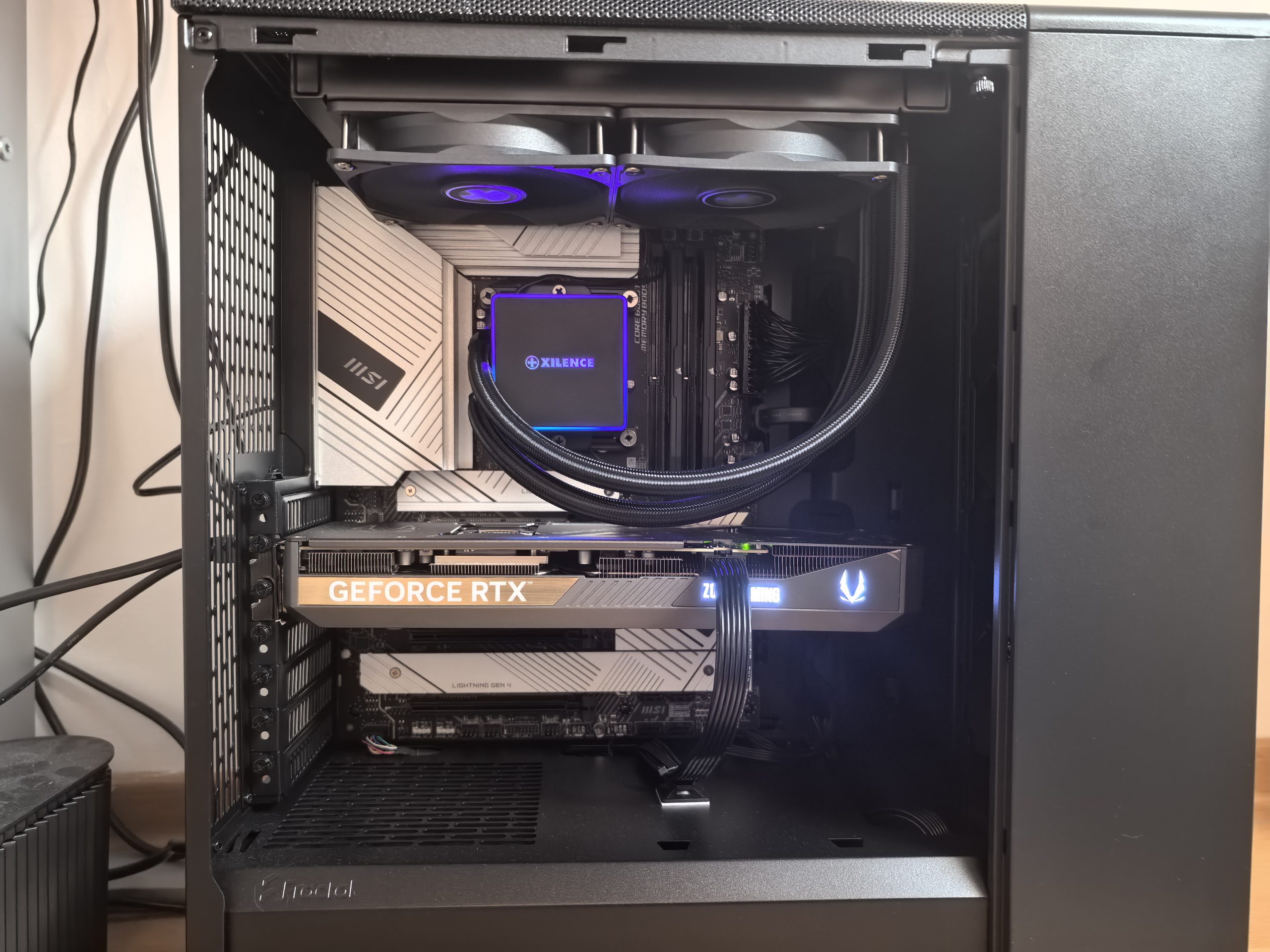
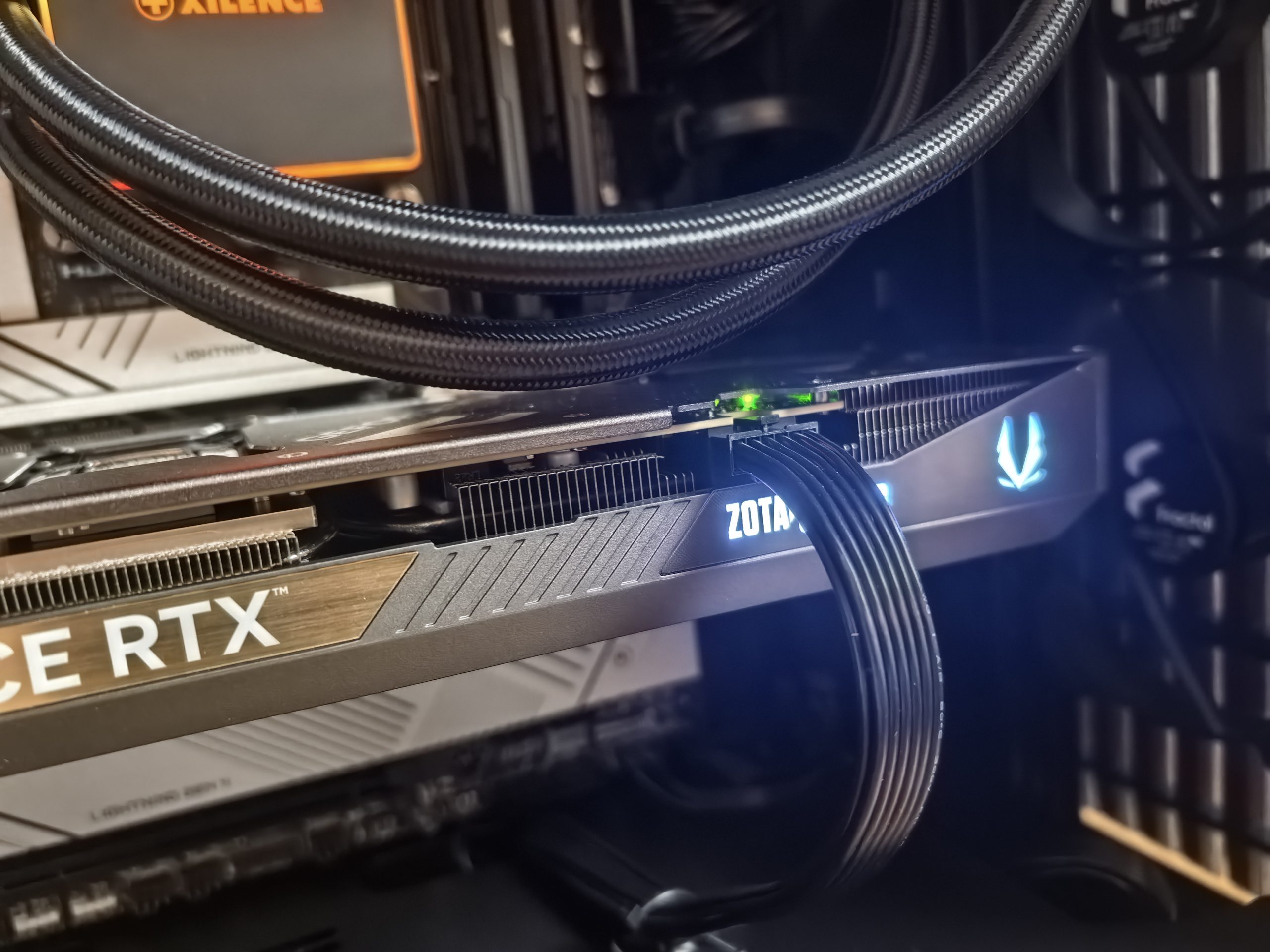
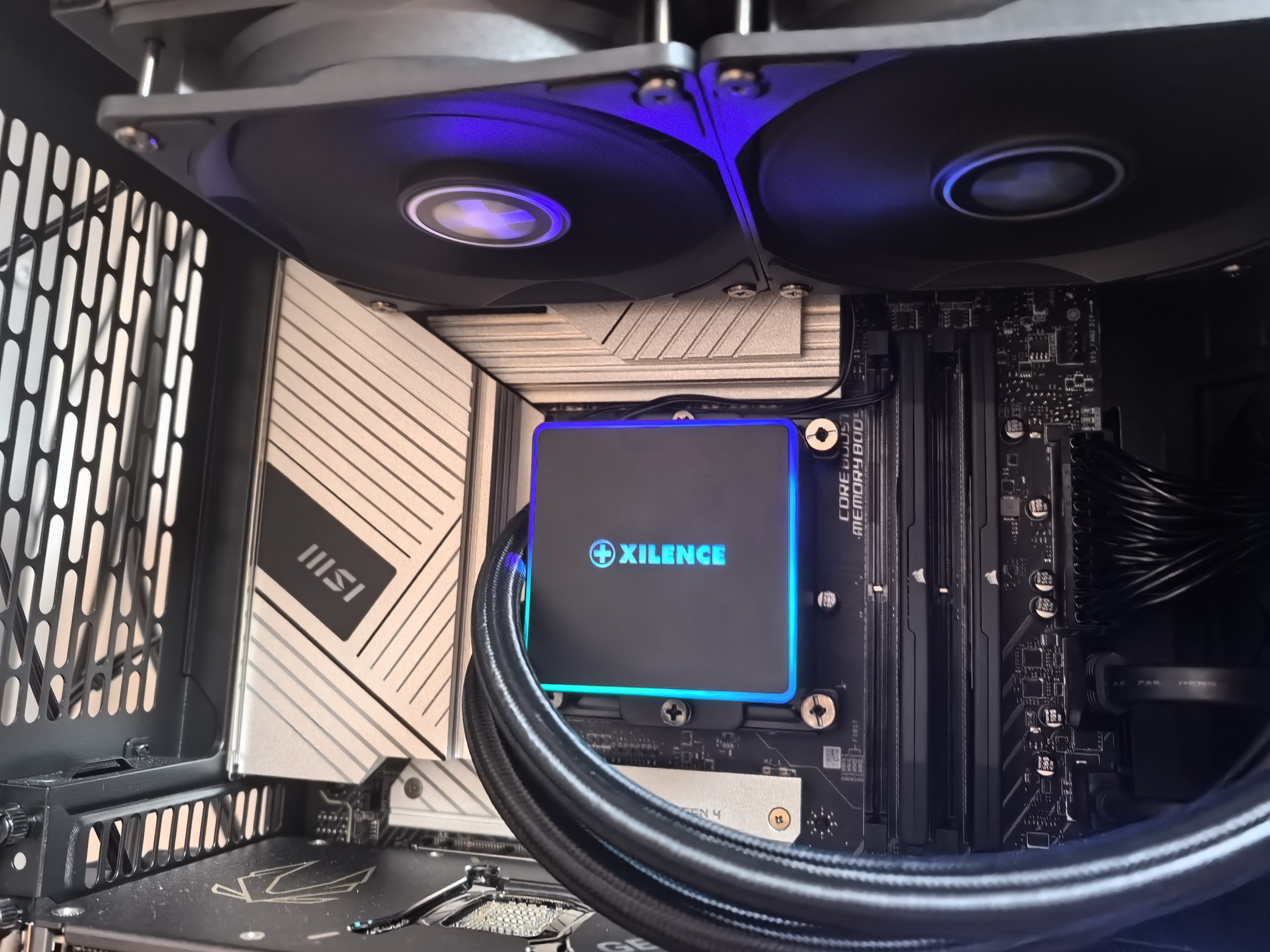
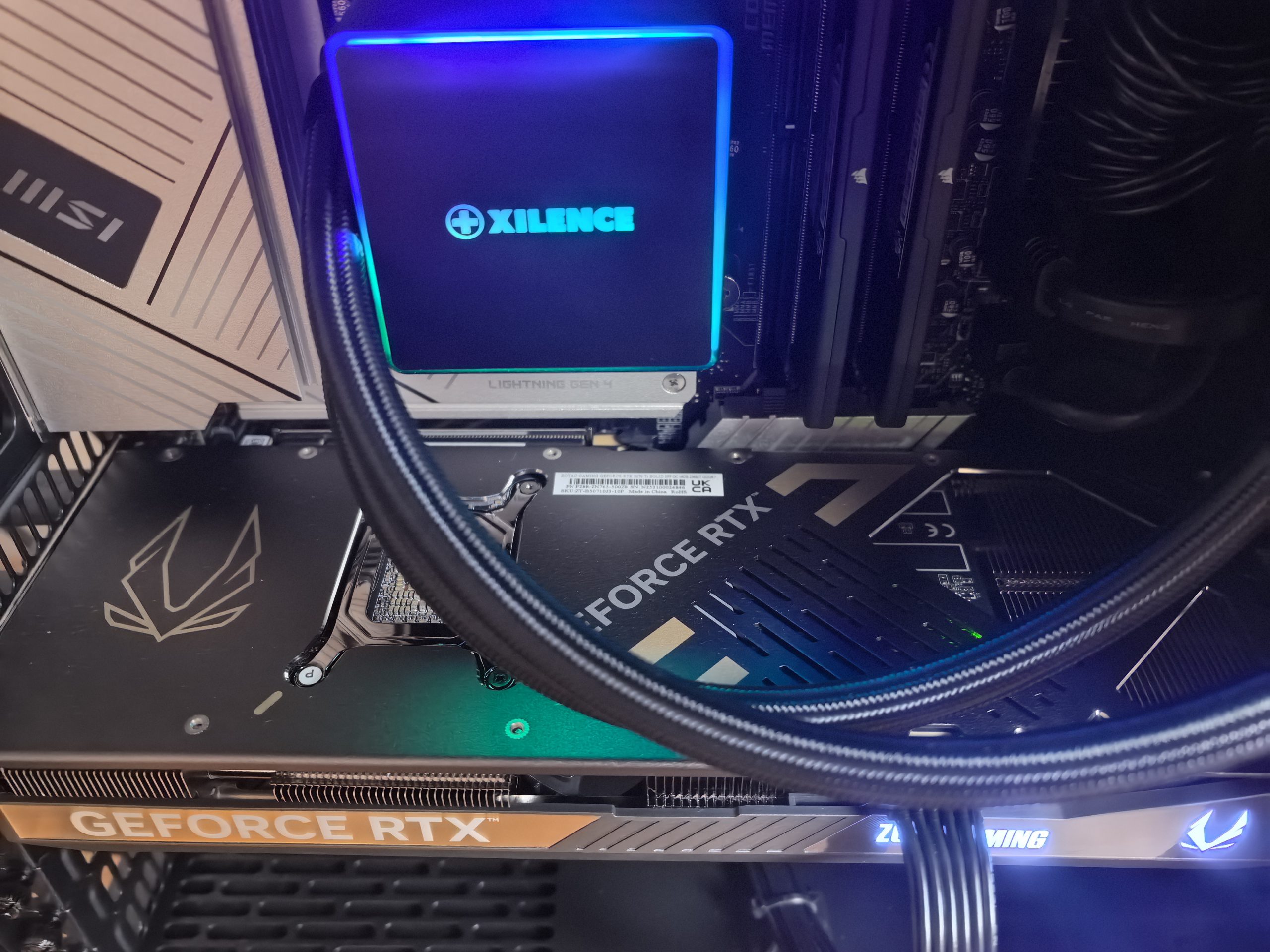
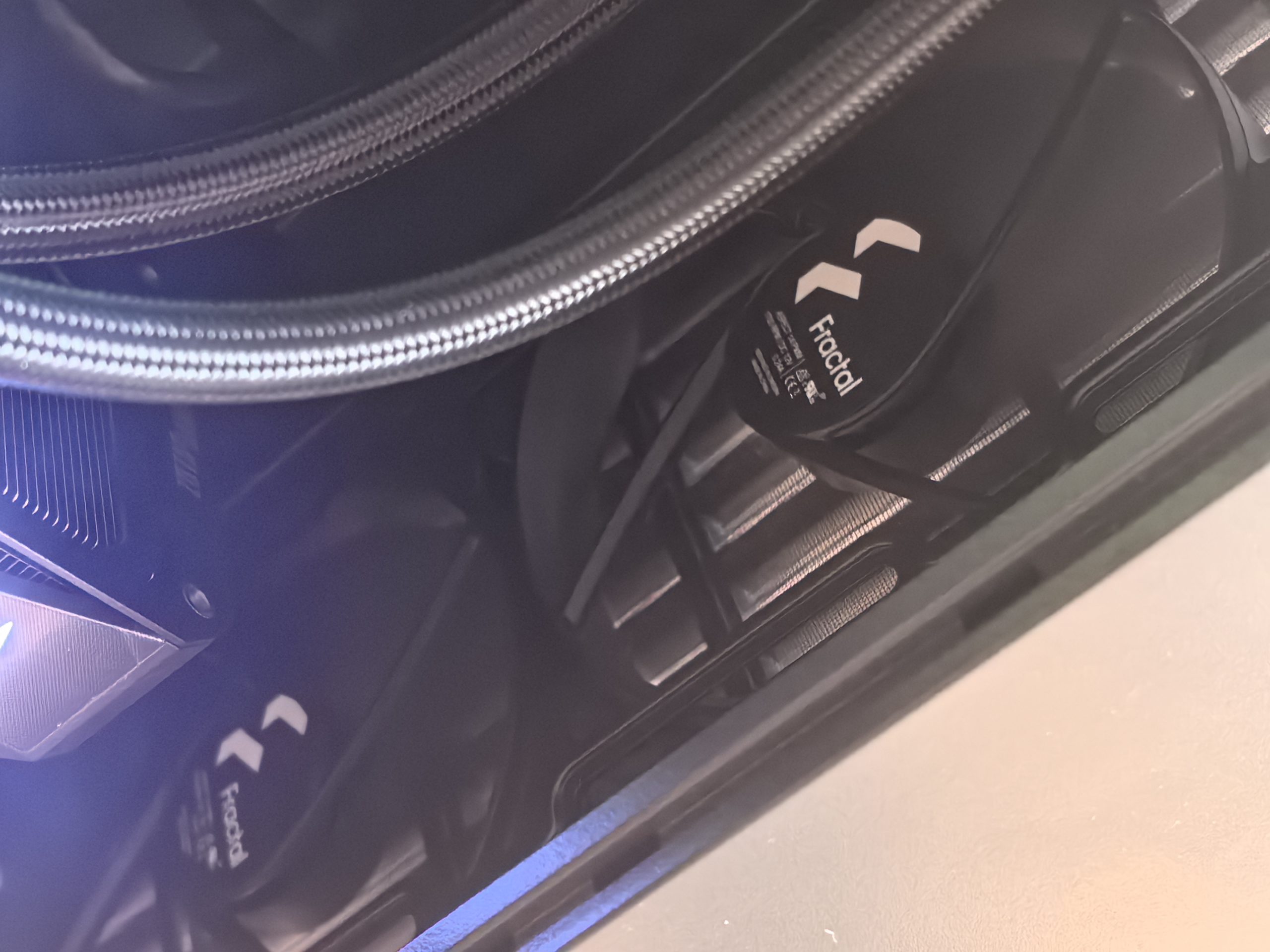
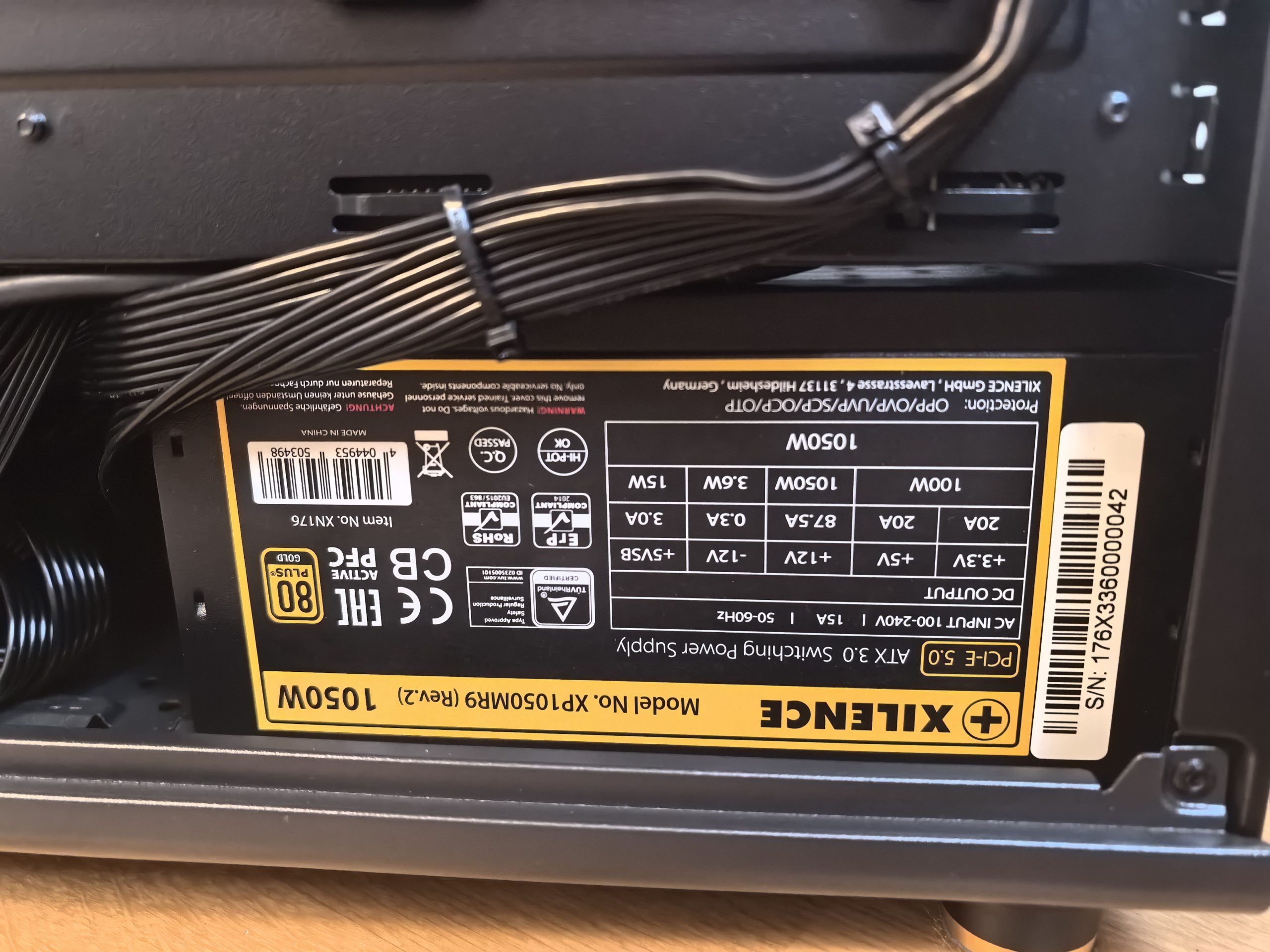

What about the Tuxedo Atlas XL computer? How did it perform?
I didn't go overboard with the components. I could have gone for the RTX 5090/4090 or the best AMD has to offer right now, but I was more sensible. I chose the range that is more affordable and is also the one most often purchased in practice.
I didn't expect anything other than good airflow from this case. The huge volume, airy sides make the difference that you miss in smaller and more closed cases. Tuxedo's AIO cooler also does the job well, although it is surprisingly loud at idle (I subsequently changed the curve in the BIOS). The i5-14600K processor temperature was an average of 25℃ at idle, the RTX 5070 Ti graphics card 40℃. When I ran Phoronix and Prime95 and performed stress tests, the processor temperature hovered around 58℃, and the graphics card was 77℃. The ambient temperature was 22℃.
The results were similarly good when playing games. The CPU temperature averaged 54℃ while playing Kingdom Come Deliverance II, and the graphics card was in the range of 73-75℃. In short, the case, the included fans, and the AIO cooler successfully cooled the main components. And there is still a lot of potential for upgrading. If I had added another fan or, for example, added another AIO cooler to the front, the result would definitely be even better. Quite excessive, because the temperatures are already below average, maybe a project for the future.
I tested a bunch of games, mostly at 1440p resolution and highest settings in Proton Experimental/10/9 compatibility mode.
| Gaming | Average (fps) | 1% Low (fps) |
| Kingdom Come Deliverance II: | 80 | 54 |
| Cyberpunk 2077 | 65 | 56 |
| Forza Horizon 5 | 158 | 141 |
| The Elder Scrolls IV Remastered | 39 | 26 |
| Horizon Forbidden West | 105 | 91 |
| God of War: Ragnarok | 149 | 120 |
| Civilization VI | 220 | 174 |
| The Last of Us Part II | 77 | 71 |
| The Witcher 3 | 100 | 66 |
These are the results without ray tracing enabled and DLSS. The latter can be problematic for certain games. For those games that support this technology by default, there are no problems. For others, you have to play around with the parameters in Lutris (or Steam, Heroic …). I followed this guide, which you can also use for other games that don't support DLSS 4 by default.
I'm a little disappointed with the built-in Wi-Fi in MSI's motherboard. In the office where I spend most of my time working and gaming, I can barely get a signal with it (the router Fritz!Box 5690 Pro is a lower floor), and the speeds were around 100 Mbps, while my home machine has a completely normal PCIe TP-Link Wi-Fi card and pulls at more than 300 Mbps. What's great is that you can freely move the antenna on the Tuxedo Atlas XL and attach it with a magnet, but unfortunately that didn't help me in this case. I got full speeds near the router, also on the cable, so apparently only the range is worse than I expected.

By default, XMP was not enabled in the BIOS, which is a quick fix, but I would have preferred to see it set at the factory.
Built-in SSD (Samsung 990 EVO Plus) is a typical representative of a PCIe 4.0 SSD with speeds of 6546 MB/s (read), 5282 MB/s (write). There is no support for PCIe 5.0 on this board. However, you have three M.2 slots available for capacity upgrades.

Tuxedo Atlas XL – a very interesting computer in terms of hardware and especially software
The combination of RTX 5070 Ti and i5-14600K is clearly more than just good. Anyone will be happy with such a computer for the next seven years, if not longer, if you don't go too hard on the game settings. This is also a great duo for productivity.
Its main feature is the TUXEDO OS. The fact that it is not just another Windows computer that can easily get lost in the crowd is both its advantage and disadvantage. Since it is primarily a Linux computer, the average buyer will avoid this computer by a long way. On the other hand, the company can target the Linux community with it and similar computers, which is growing every year. And the main reason is that Linux is becoming easier to use, which TUXEDO OS also confirmed to me. Even if you are getting acquainted with Linux for the first time, TUXEDO OS will make sense and logical sense to you. Yes, you will have to learn some terminology and basics. You can help yourself with the manufacturer's website or refer to the forums for specific obstacles that you may encounter. After these initial cramps, I think you will realize that you can live with Linux. You can still set up a dual-boot if you really need Windows for certain tasks.
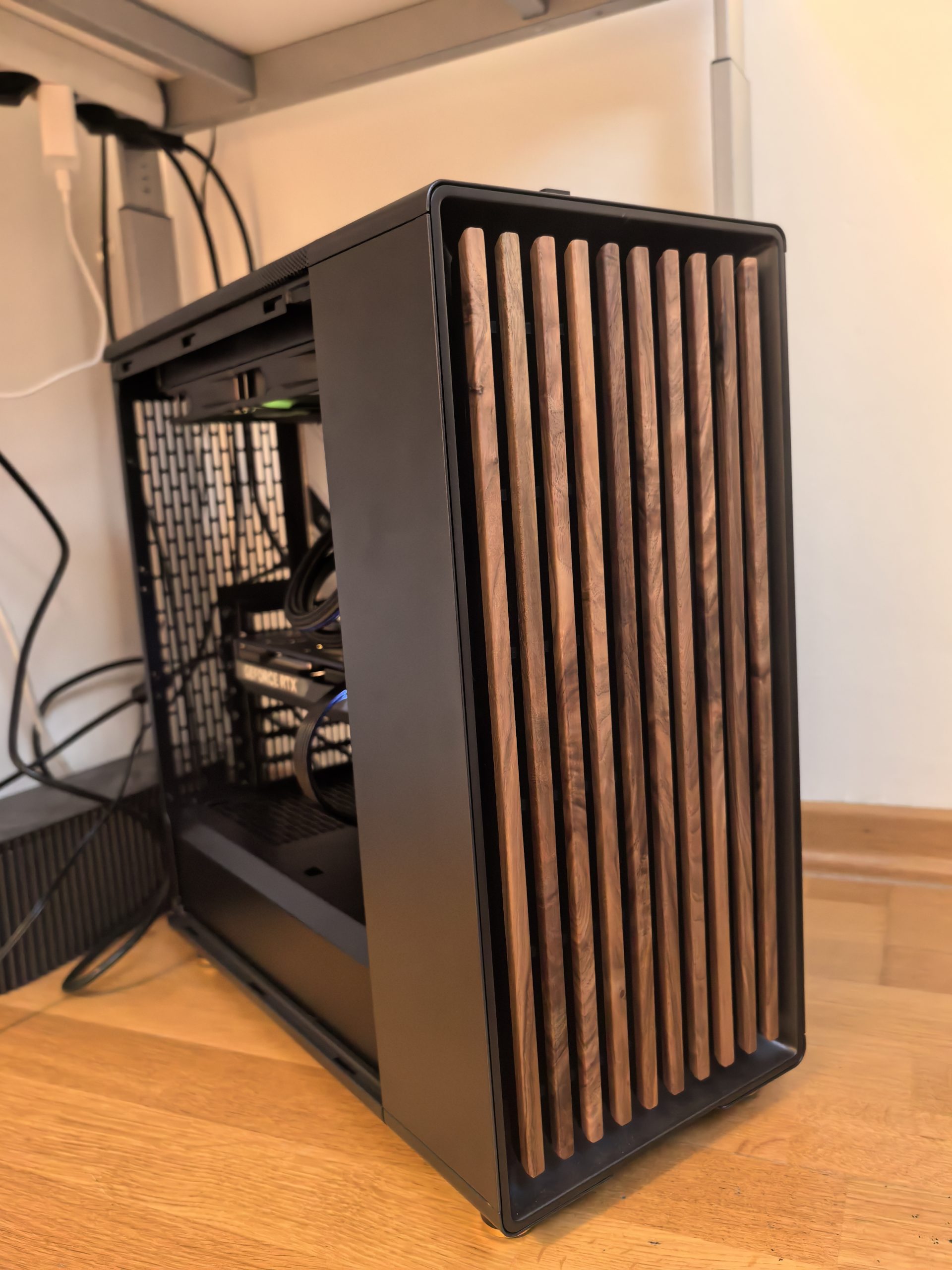
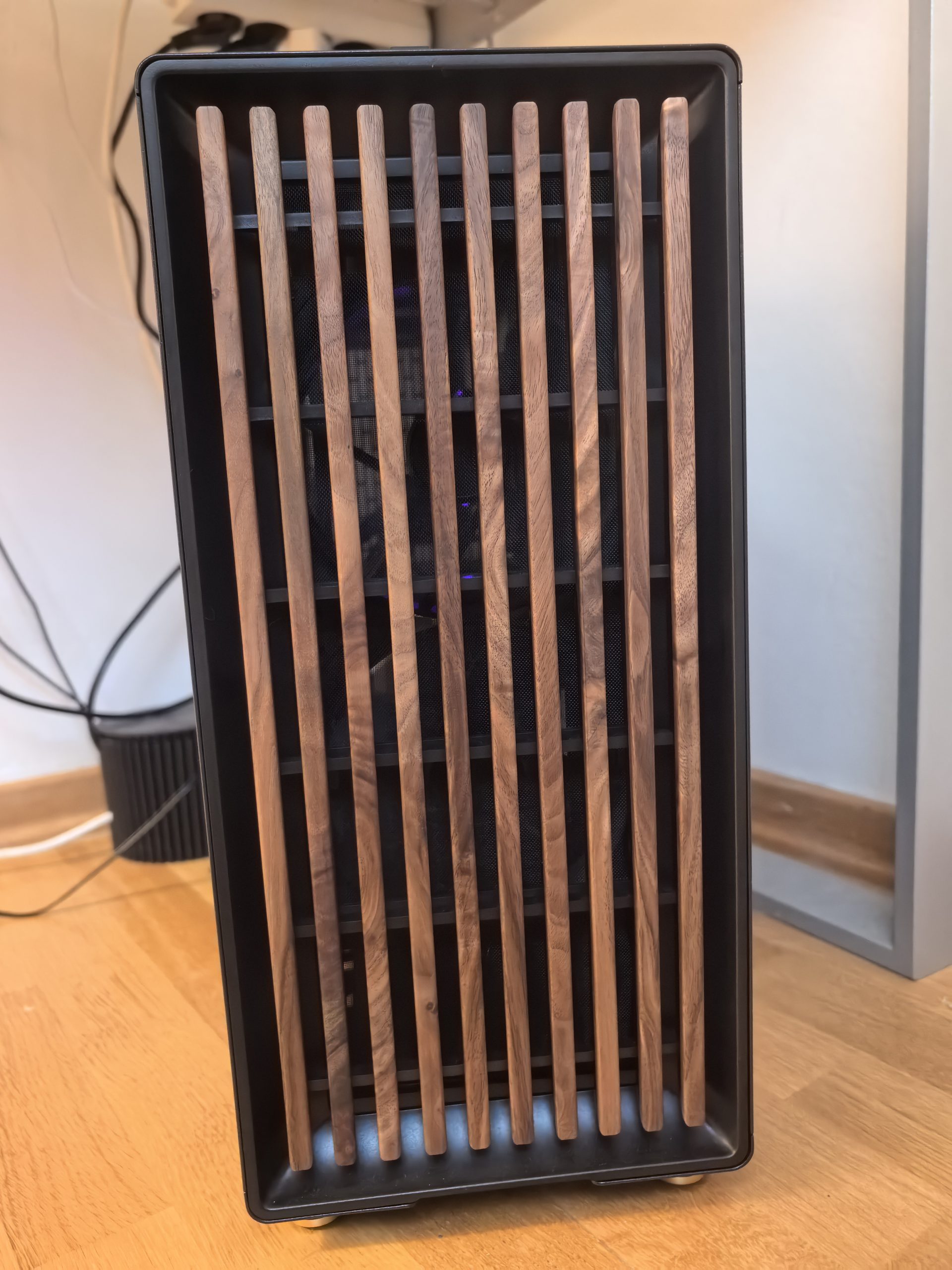
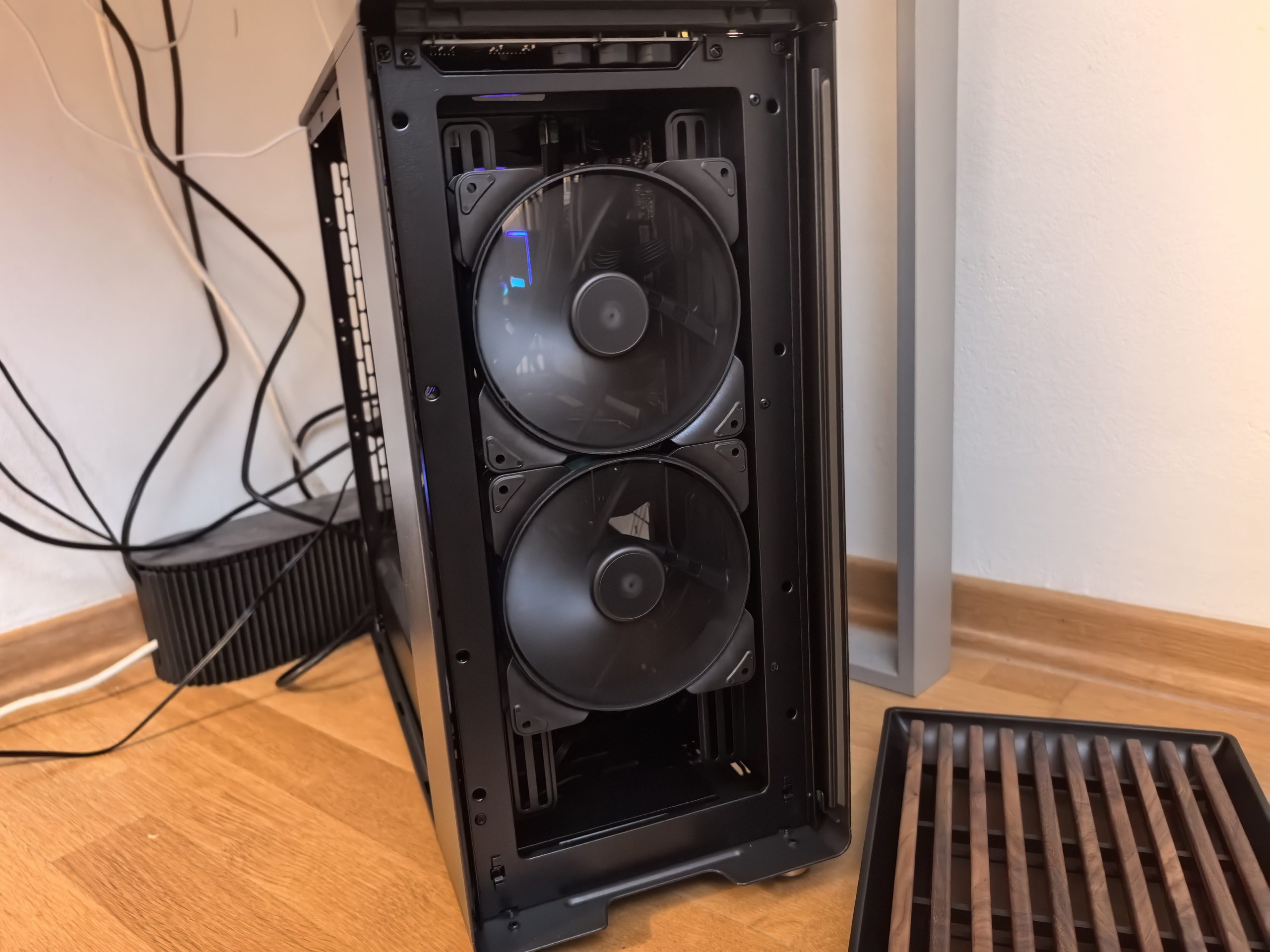
For gaming, I've known for some time that Linux (and also TUXEDO OS) can be a good, equal, sometimes worse, sometimes better alternative to gaming on Windows. But it's not entirely intuitive, and game developers often don't pay much attention to Linux either, which I hope will change in the future.
My opinion on the Tuxedo Atlas XL computer? I really like it. It's well-built, which is especially evident in the neat interior. The components I chose are well-organized. What I can't ignore is that you pay a premium for their services. If you build your own computer, you'll get it cheaper, which is basically the case every time you buy from similar companies. What's in Tuxedo's favor is the fact that by buying it, you're also supporting their development of the Linux community. If Microsoft ever goes completely crazy, we can be glad that there is a Linux alternative.
Tuxedo Atlas XL is therefore excellent in terms of hardware, and their TUXEDO OS operating system adds the finishing touch.



